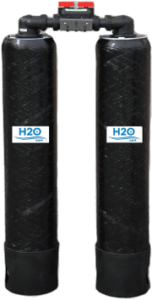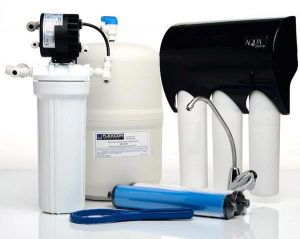
PFAS in Water Filtration Systems
WHAT IS PFAS & HOW DOES IT GET INTO WATER SUPPLIES
PFAS (Per- and polyfluoroalkyl substances) are a group of man-made chemicals that have been manufactured and used in a variety of industries since the 1940s. Moreover, some of the more common commercial applications have been for products like Teflon and stain & water–resistant materials. Others include paints, polishes, fire fighting foams (a major source of ground water pollution near airports, military bases and fire fighting training centers). In many cases, containment wasn’t even a consideration which resulted in introduction of the contaminants to groundwater. These chemicals are being detected at dangerous levels in drinking water supplies around the country. (For removal methods see section below, “Removal of PFAS”). Also, for an article we published in Water Technology Magazine on PFAS in water, see PFAS Water Tech Mag.

PFAS In Water Removal
POTENTIAL HEALTH AFFECTS OF PFAS
Scientific evidence indicates that exposure to PFAS may lead to adverse health outcomes in humans. Accordingly, ingesting it through drinking or eating, it can be absorbed and accumulate in the body. PFAS stay in the human body for long periods of time. As a result, the level may increase in the body to the point where adverse health effects take place.
Additionally, studies indicate that PFOA and PFOS can cause reproductive and developmental, liver and kidney, and immunological effects in laboratory animals. Furthermore, both chemicals have caused tumors in animal studies. Consistently, findings from human epidemiology studies show increased cholesterol levels among exposed populations, with more limited findings related to infant birth weights as well as:
• thyroid hormone disruption (for PFOS).
• effects on the immune system,
HOW TO REMOVE PFAS FROM YOUR WATER SUPPLY

PFAS Removal System
There are technologies effective in removing PFAS from drinking water, especially Perfluorooctanoic acid (PFOA) and Perfluoro octane sulfonic acid (PFOS). These are the most studied of these chemicals. Moreover, the most effective technologies include Ion exchange, activated carbon adsorption and reverse osmosis. For more information on removal, see the link at https://h2ocare.com/what-are-pfas/.
Reverse Osmosis, Point of Use System

Reverse osmosis water system
This membrane based technology can be used at a point-of-use such as at a kitchen sink to feed a separate drinking water faucet as well as ice makers or refrigerator dispensers. Additionally, this system can be installed under the kitchen sink or in the basement below, with a line run up to feed the separate faucet. For more on this technology, see http://reverse-osmosis.
For more on health related issues, see the link at https://www.epa.gov/pfas for more detailed information.


